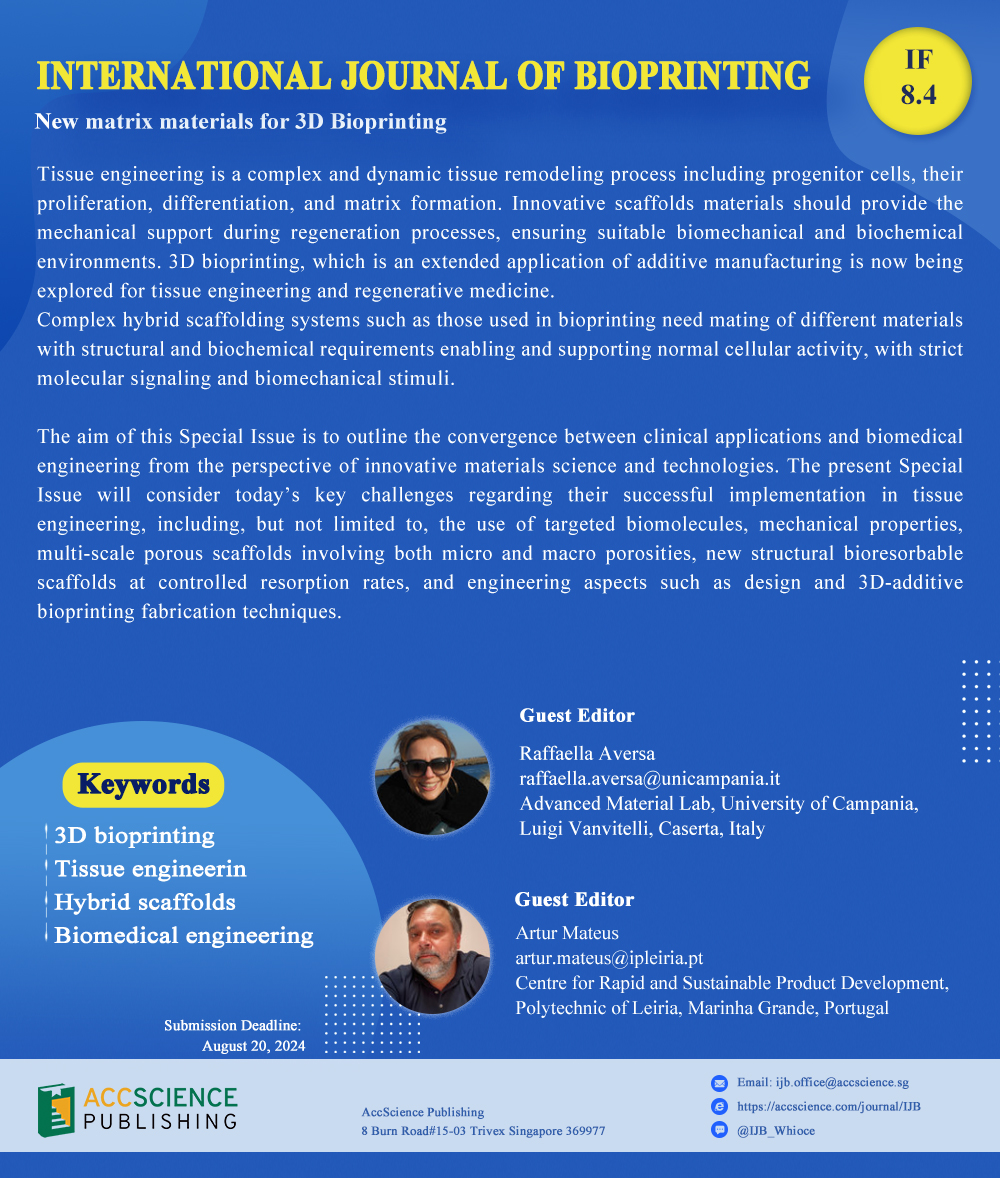
Tissue engineering is a complex and dynamic tissue remodeling process including progenitor cells, their proliferation, differentiation, and matrix formation. Innovative scaffolds materials should provide the mechanical support during regeneration processes, ensuring suitable biomechanical and biochemical environments. 3D bioprinting, which is an extended application of additive manufacturing is now being explored for tissue engineering and regenerative medicine. Complex hybrid scaffolding systems such as those used in bioprinting need mating of different materials with structural and biochemical requirements enabling and supporting normal cellular activity, with strict molecular signaling and biomechanical stimuli.
The aim of this Special Issue is to outline the convergence between clinical applications and biomedical engineering from the perspective of innovative materials science and technologies. The present Special Issue will consider today’s key challenges regarding their successful implementation in tissue engineering, including, but not limited to, the use of targeted biomolecules, mechanical properties, multi-scale porous scaffolds involving both micro and macro porosities, new structural bioresorbable scaffolds at controlled resorption rates, and engineering aspects such as design and 3D-additive bioprinting fabrication techniques.
Designing methacrylic anhydride-based hydrogels for 3D bioprinting



